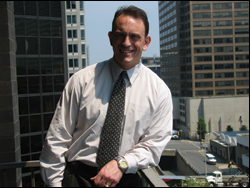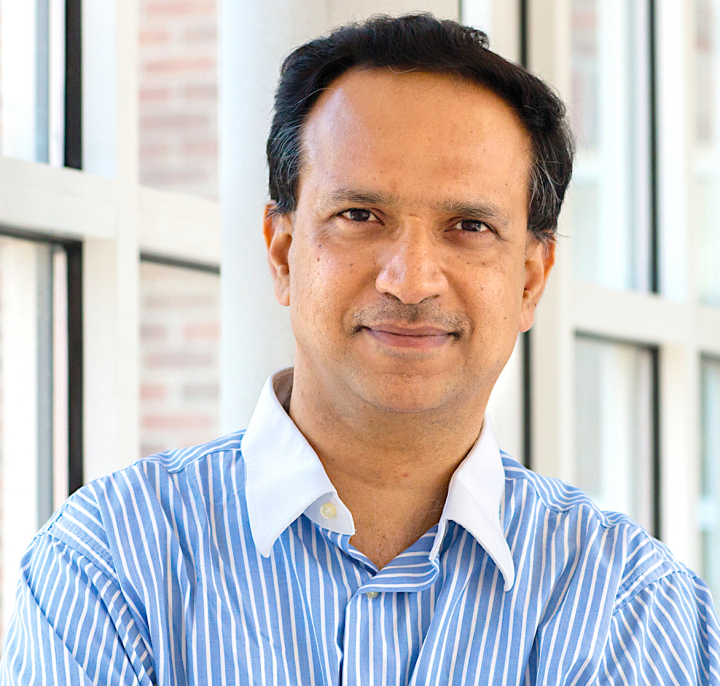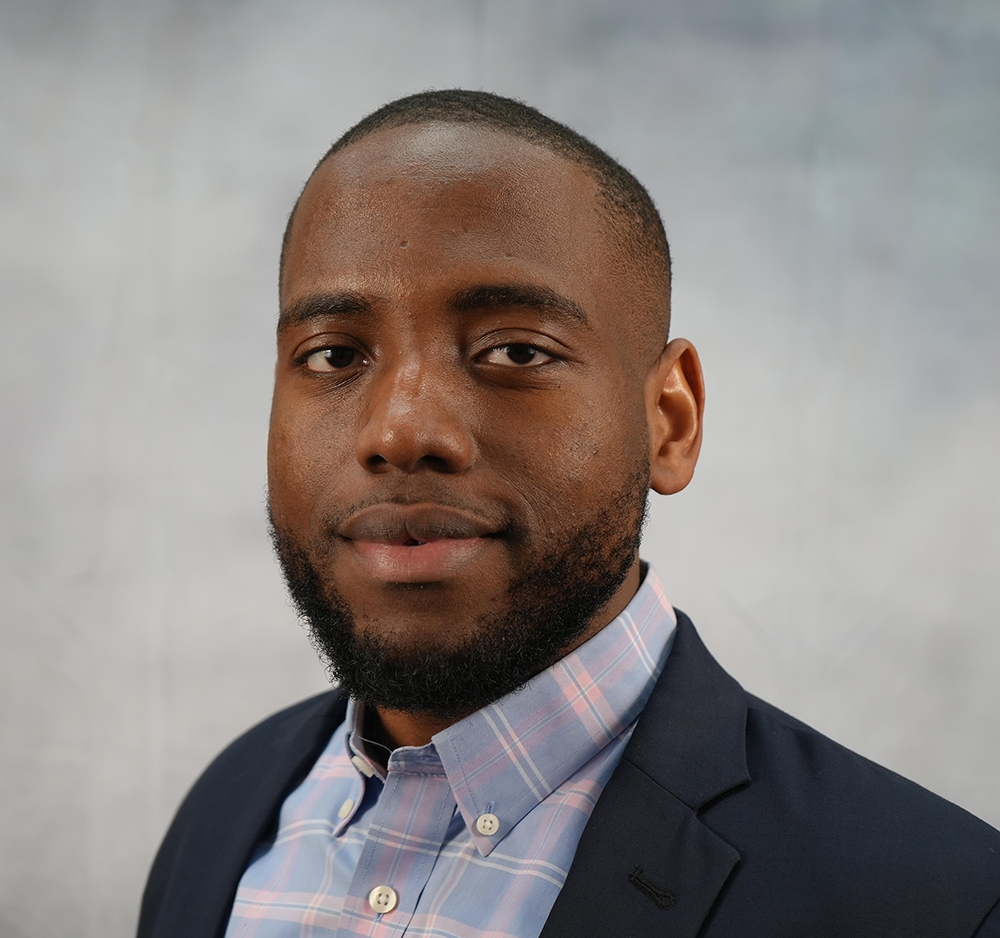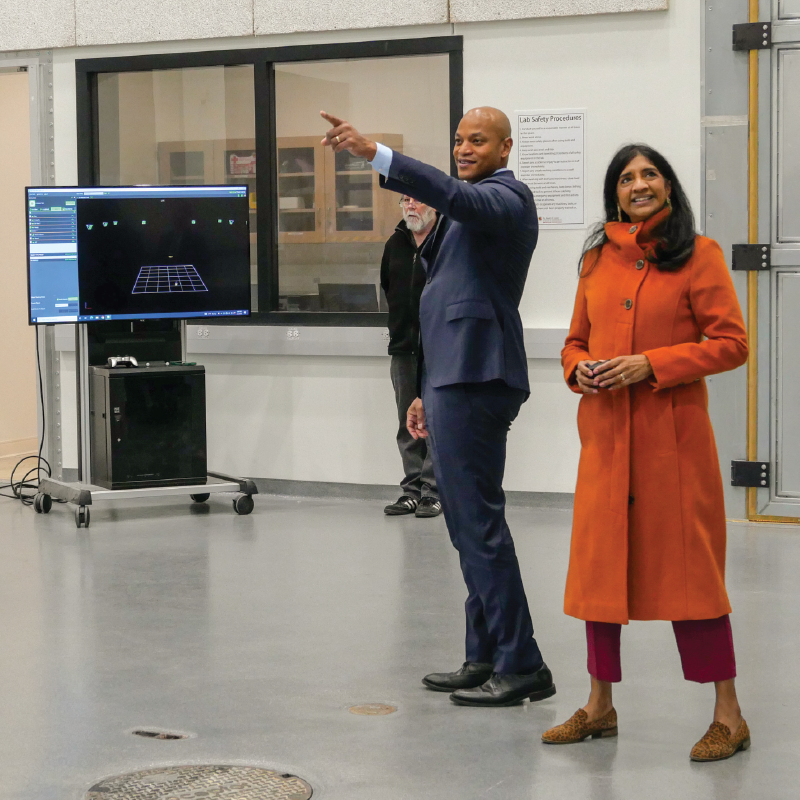News Story
Alumnus interview: Ingar Grev

Grev earned a B.S. in Systems Engineering at the Naval Academy, and saw ISR’s MSSE degree as a natural next step in an engineering career. His advisor was Professor Michael Ball (Robert H. Smith School of Business/ISR). It was as he was completing the core curriculum for the MSSE that Grev made acquaintances with business leaders and began to consider avenues for his skills in the business world.
At the same time, Grev was working for Bell Atlantic (now Verizon), in business process reengineering. “This got me thinking about how one could apply systems engineering principles to organization design methodology,” he says.
Grev finished the MSSE as he was in a job transition from Verizon to Booz Allen Hamilton, but within three months he was recruited to help start the Ballistic Missile Defense Office’s National Missile Defense (NMD) program for Photon Research Associates. Grev took responsibility for developing the requirements for the interfaces between major system elements. After about six months, when people had been hired to manage each individual interface and things began to slow down, Grev felt his “business ‘jones’ begin to kick in,” and he looked for opportunities to be an impact player in a technology-heavy business. In 2000 he moved to Covad Communications, a provider of T1 lines, DSL, broadband and VoIP services.
Grev also decided to pursue an MBA in Maryland’s Smith School in addition to working full time.
Hooked on business
“I really had decided that I wanted to lead a business, either as an entrepreneur or as the CEO of an established company,” Grev says, “so I pursued the MBA to get the tools that my career path wasn’t really giving me.” In his MBA program, Grev concentrated on corporate finance, organizational strategy, data analysis, and entrepreneurship classes.
At Covad, Grev built forecasting tools and implemented statistical process controls for staffing and capacity expenditures, and also modeled networks with discrete elements. He realized his systems engineering background and modeling experience were valuable assets and were highly beneficial to the organization. Grev’s work is still in use at Covad; he estimates that his team saved the company about $20 million, or about 5 percent of revenues, out of its operating budget during his time there.
In May 2003 he returned to Photon Research Associates, now a wholly-owned subsidiary of Raytheon. Grev manages several programs in his current position as director, program operations. The largest of these is a research and development project for the Missile Defense Agency’s Project Hercules that develops advanced software solutions for the Space Tracking and Surveillance System (STSS). Grev finds his systems perspective is valuable here too—he is able to see how one piece, such as a satellite, can help the system as a whole solve problems.
In his role evaluating research development, Grev uses his systems perspective to help determine whether principal investigators can develop technology as they promise, or whether the development is languishing. He also makes sure the research is relevant and meets the requirements of its customers.
Systems engineering
advantages
Although Grev didn’t end up pursuing engineering as a career, he credits his education at ISR with teaching him three critical things. First is the ability to do systems thinking. “I view everything as a system now,” Grev says, “and the advantage is that I usually am one of the few people in the room who has the really big picture about how everything interacts.”
“My hot button these days is understanding the human-in-the-loop and how he or she impacts system effectiveness in ways so profound, that you are foolish to design a system without getting users involved early on. I think we neglect optimizing the human in the loop at our peril. A lot of engineers and scientists don’t spend a lot of time out in the field actually working with people. I have found that when you properly understand the human, you create a more robust system.
The second lesson Grev learned came from Associate Professor Mark Austin’s (CEE/ISR) requirements engineering class. What Grev understands is that in requirements generation, just because a customer thinks they know what they want doesn’t mean that they really do. “A competent manager needs to work with a client to really understand requirements,” Grev says. “It is my job to help the customer determine this and then figure out how to get them there.”
Grev developed tools and built a team that optimized capacity in more than 1,800 Covad central offices (COs) while also optimizing staffing needed to install or redeploy that capacity. Initially, several COs had critical shortages of capacity while most had significant excess capacity. Grev developed a model of the entire network of discrete elements (e.g. linecards, test equipment, etc.), which allowed his team to effectively manage capacity, mitigate forecast risks, and provide realistic material requirements to the supply-chain manager. By taking control of when capacity would be installed in the network, using just-in-time principles, Grev was able to build simulations of the network’s growth based on the growth and shrinkage—or “churn” of the customer base.
Grev’s team also created a virtual inventory of underutilized capacity, which allowed capacity from one CO to be harvested to satisfy requirements in another. The model also ensured that a technician wouldn’t need to return to the CO where capacity was harvested to reinstall it for at least six months. This helped technicians buy into the harvesting plan, ensured that staffing was not used ineffectively, and eliminated the need to purchase—or even ship—new capacity.
Grev estimates that using this just-in-time approach, Covad had the capacity it needed to provision its customers 99.72 percent of the time and reduce the amount of excess capacity in the network.
An entrepreneur’s heart
“Over the years I guess I hung out with too many entrepreneurs,” Grev says. His passion is owning his own business, and recently he has found a way to do just that. In addition, he’s making the most of his systems engineering and business skills, while adding to his contacts and strengthening his standing the business world. Grev bought a franchise in “The Growth Coach,” a business coaching service, and now has his own independent office. So in addition to his day job, Grev now helps small business owners become strategic business owners. “The Growth Coach lets me see into a whole new world,” Grev says. “I really want to help entrepreneurs become successful and do what they want to do. It’s all about helping people see the bigger—systems—picture of what it is they really want.” SS
Published October 15, 2007









